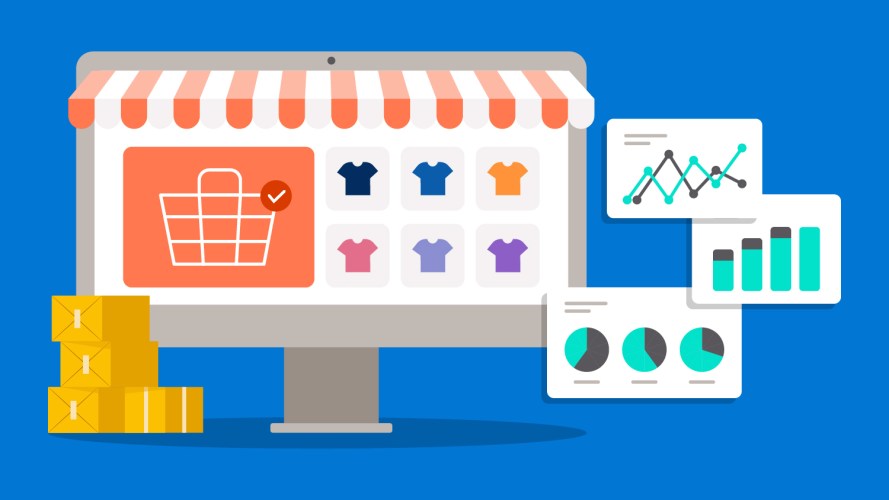4 Ways To Make Holiday Shopping Easier for Your Customers



Use real-time data and AI to wow customers with personalized experiences.

Matt Marcotte
Your customers value quick, easy, and convenient retail shopping experiences all year long, especially during peak moments like back-to-school and holidays. These days, they do a lot of the early legwork browsing with their fingertips, searching for deals, and comparing prices on their phones. That’s why mobile traffic and order share grew 10% even though digital commerce was down earlier this year.
This holiday season — and all year long — digital channels continue to grow in importance. For retailers to stay competitive, you must wow your customers with frictionless shopping journeys that are intuitive, streamlined, and fast. When planning your retail holiday strategy, put your customers’ needs first and simplify the retail holiday experience with these sure-fire tips.
Delight your loyal customers this holiday season
Learn to use data and AI to create magical retail experiences.



Tip #1: Use generative AI to optimize the retail shopping experience
While you may already harness AI to elevate the retail shopping experience, the potential of generative AI takes it a step further. Commerce teams use it to power product recommendations based on a shopper’s search history, respond to real-time customer questions with a chatbot, and predict product demand based on seasonal trends. Now, retailers can take the next step with generative AI, which analyzes algorithms and patterns to generate new and original content including images, videos, audio, text, and music. Done right, generative AI can elevate your customer engagement and operational efficiency.
Generative AI can help you:
- Generate dynamic product descriptions — in just minutes — that target SEO keywords and improve search rankings
- Create custom page content that reflects personal interests and attracts customer attention, such as generating a product image of a sweatshirt with the buyer’s favorite team name or a cover photo of a dad playing tennis with a daughter to reflect the shopper’s family dynamics
- Offer personalized promotions and product bundles, in real time, based on the customer’s buying history and current shopping cart
- Analyze sales data during peak shopping moments for recommendations on inventory management and automate reordering of stock
- Monitor and analyze competitor pricing, build adjusted pricing models, and automate price changes across digital (and in-store) channels in response
These generative AI functions can save you time, effort, and cost during busy holiday shopping periods, while making it easier to engage loyal customers with personalized and timely offers.
Tip #2: Keep online shopping experiences in the moment
Staying ahead of the next big holiday can be a challenge. Flash sales, blowout events, and huge promotions drive new waves of online traffic to your website, app, and social media channels, sometimes daily. When one peak moment is over, don’t confuse shoppers by letting it linger on your website days later. When deals aren’t refreshed instantly and consistently across all your customer touchpoints, you cause headaches for your staff and confusion for your customers.
You can solve this problem with composable commerce. In just a few clicks, you can make changes to all of your digital channels, including mobile and social, automatically and simultaneously. You don’t even need to engage your developers. Best of all, shoppers will love that you’re meeting them at the right moment, and reward you with their business. Companies that use composable commerce succeed at digital commerce at greater rates (55%) than companies without it.
Additionally, when this architecture is integrated with your social channels, you can serve up dynamic product ads and collection ads and offer in-app checkout on social channels. These surprise shopping opportunities encourage purchases by consumers who weren’t actively browsing but were intrigued by a product spied in a social post.
Tip #3: Prioritize frictionless purchase and fulfillment
Everyone is in a hurry, but never more so than during the holiday shopping season. Whether online or in-store, customers want to quickly find what they’re looking for, pay without impediment, and bring home their merchandise as soon as possible. Encourage customers to make the final “click” in their journey by upgrading your payment and fulfillment options with an eye on flexibility and convenience. Make it easy to shop by upgrading:
- Payments: Just as tap-and-go credit cards have become the norm in the store, don’t overlook one-click online payments and high-growth payments options like mobile wallets, Buy Now Pay Later (BNPL), and Pay Over Time (POT).
- Store fulfillment: Enable flexible fulfillment options, like buy-online-pick-up-in-store (BOPIS), a choice that’s popular with customers and that’s been adopted by 85% of retailers.
- Try-at-home services: Some retailers are experimenting with temporary try-at-home options that let customers use products for a few days without charge.
- Notice of out-of-stocks and slow delivery: Don’t disappoint buyers by revealing the gift they need for next week’s party is out of stock only after they’ve completed their online purchase. Note shipping delays on the product page and suggest a comparable product as a replacement.
- Make it easy for customers to track purchases: Be sure they can access their order history, track delivery, and use self-service to arrange a return or exchange.
Tip #4: Simplify online returns
Don’t let messy returns ruin the retail shopping experience. Merchandise returns cost retailers billions every year, with nearly 18% of purchases heading back to stores and warehouses. If you’re considering scaling back return policies by shrinking the return window, establishing final sales, or charging restocking fees, first consider the impact it could have on customer loyalty. For many customers, the return and exchange policy is the top reason they choose a retailer. Even more important, 95% of customers say a bad returns experience makes them less likely to buy from a brand again.
You don’t have to risk customer satisfaction to preserve margins. It’s possible to streamline returns for customers, retain revenue, and save on costs:
- Automate returns: Let customers generate their own return authorization codes and labels, and make shipping free — an experience preferred by 64% of shoppers, according to our research. Additionally, you’ll reduce service worker caseload, and lower cost to serve.
- Enhance product detail pages: Make sure your product pages provide detailed descriptions. We found 46% of consumers relied on customer reviews when choosing the correct size and color, followed by user-generated photos and sizing charts, all of which reduced the volume of returns.
- Encourage exchanges, not returns: When a customer requests a return online, offer personalized product recommendations to replace the initial purchase. We see 88% of consumers prefer to conduct an exchange rather than a return at least some of the time.
- Collect returns from a centralized location: Allow customers to drop returns at a central location managed by a third-party returns provider, like what Amazon does at Whole Foods and Kohl’s. It’s convenient for customers and helps you save on costs since it enables you to bulk-ship packages back to the warehouse.
- Enable instant refunds: Our research found 46% of customers think instant refunds make returns easier. As soon as your employee scans the return shipping label, issue the refund.
Easy shopping experiences keep customers loyal
As shoppers go mobile, commerce teams need to get agile and offer simplified digital touchpoints and flexible purchase, fulfillment, returns, and service options. Make peak shopping moments more convenient by using real-time data, AI, and automation to deliver connected, consistent, and simplified retail shopping experiences.
Turn today’s shopping trends into tomorrow’s retail success
See how 1.5+ billion consumers are shaping shopping trends, from holiday sprees to everyday needs.


























